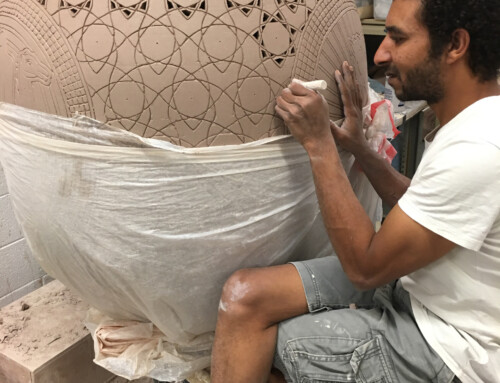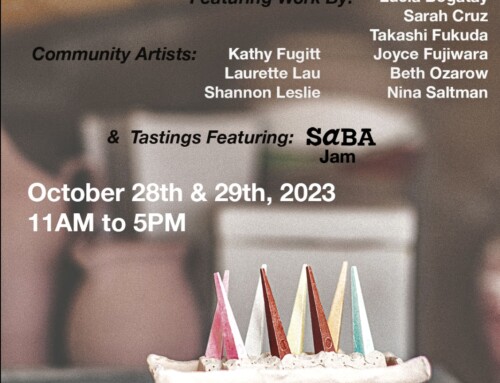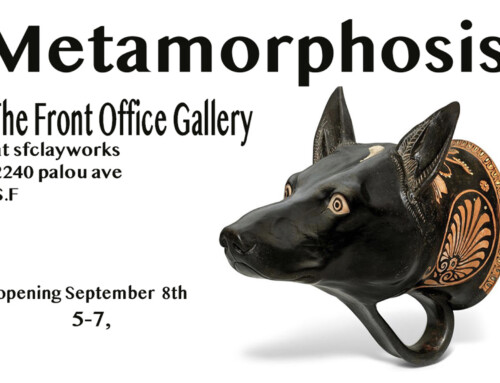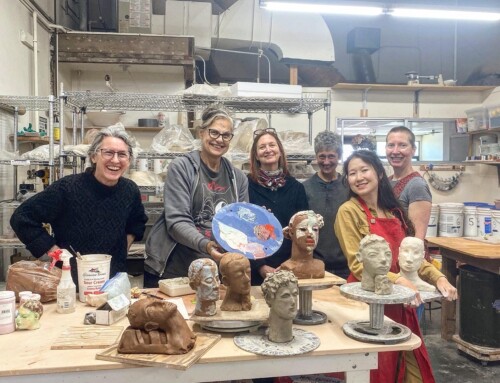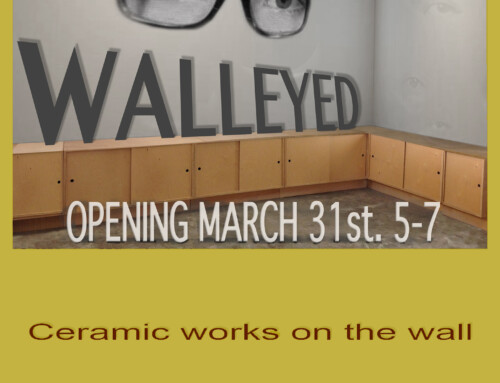Konnichiwa San Francisco Clay Works!
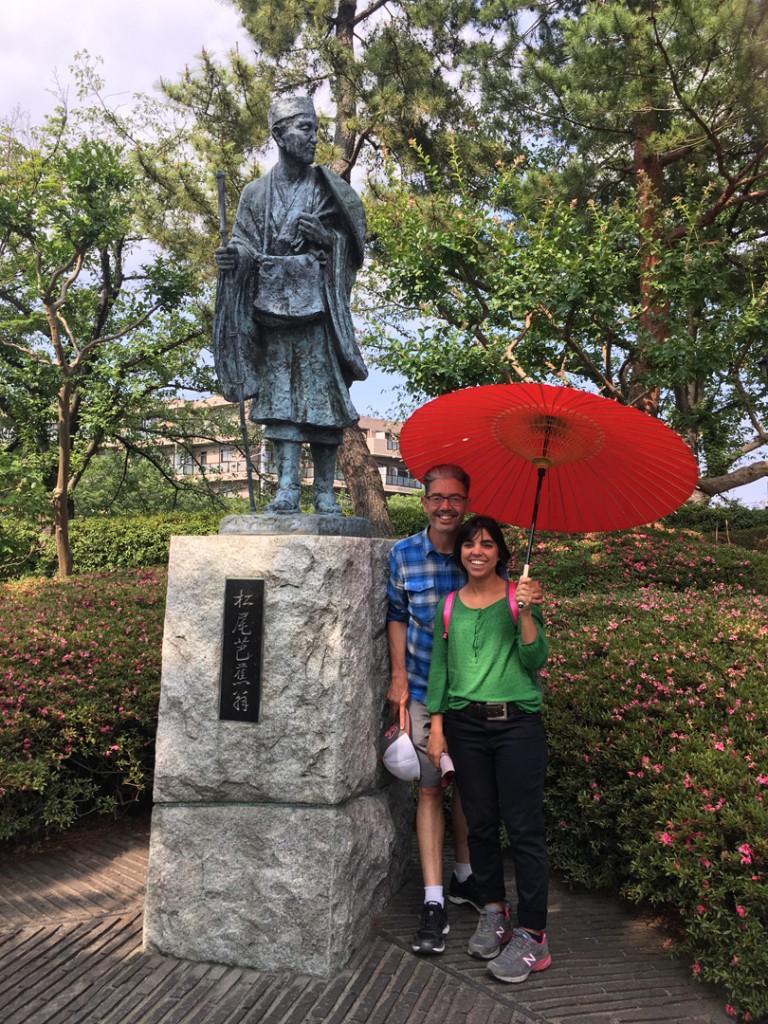
Chris, Judy, and Basho living the life in Japan
sfclayworks is excited to share with you a few tales from the adventures of sfclayworks artist Chris Lewis. Chris is in Japan for a month and wanted to share his clay advetures with all of you. Thank you Chris! We look forward to more stories.
Konnichiwa San Francisco by Chris Lewis
While I am in Japan for a month, I thought I would share some of my pottery experiences with the greater clay community via this blog. Thanks first goes to sfclayworks own CTO, Joyce Fujiwara-san, for her technical assistance getting this “on the line” – Arigato gozaimasu Joyce!
Week 1: I arrived in Japan Monday, May 29th. My wife Judy is here on sabbatical, teaching poetry and theater at Dokkyo University in Soka, about a 40 minute train ride north of Tokyo proper. Soka is famous for senbei (rice crackers) and as one of Matsuo Basho’s stops on his famed Narrow Road to the Interior. Since this is not my first visit to Japan, I don’t feel obliged to visit the usual tourist places, and instead have chosen to find a first-hand pottery experience of my own. Through Judy’s acquaintance, I was introduced to Tokyo Ryusen Ceramic Studio , a small but thriving pottery on the north side of Tokyo. I will come back to that in a moment, but first, a few plugs for a great museum here – the Japan Folk Craft Museum and a fantastic show I caught at the Tokyo National Museum called Chanoyu – The Arts of Tea Ceremony, The Essence of Japan
The concept of Mingei or “folk craft” was developed, in part, by two of Japan’s most famous potters, Shoji Hamada and Kawai Kanjiro, in the early 20th Century. In essence, mingei is a celebration of beauty in everyday life through ordinary objects. It’s the handmade cup you drink from, the chair you sit in and the broom you sweep your floor with. Not that I don’t appreciate a Van Gough, but this style of aesthetics is a little more approachable for me.
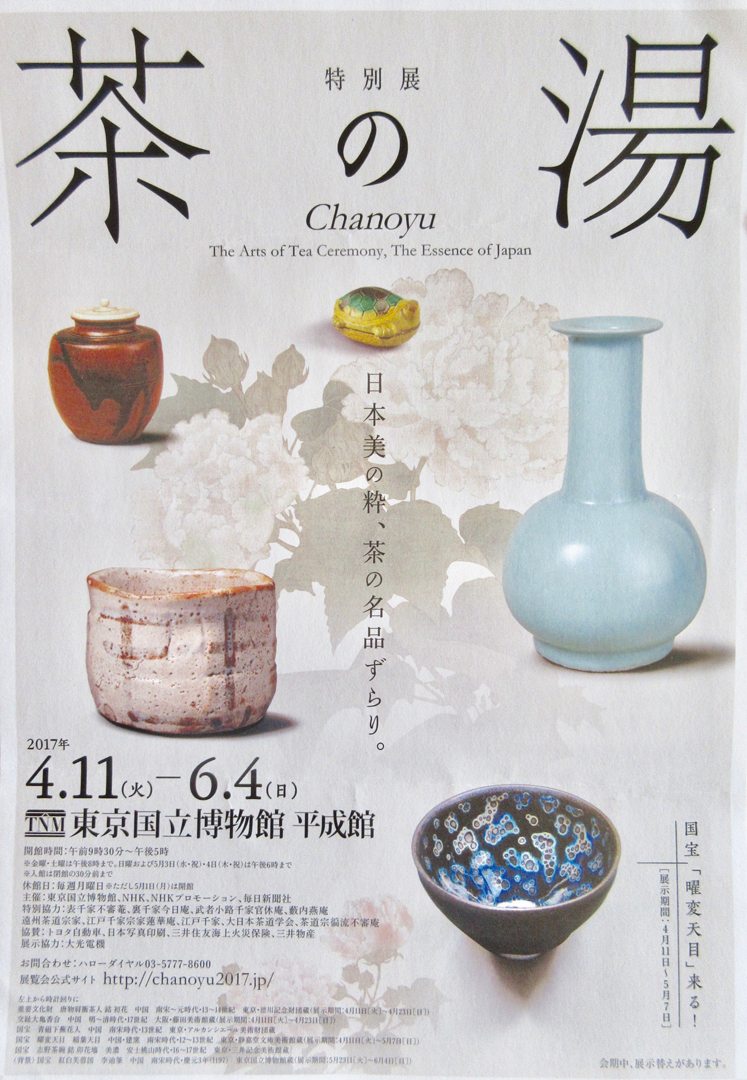
Chanoyu exhibition Tokyo, Japan
The Chanoyu exhibition was epic. Where else but Japan will you find people of all ages, packed three deep around a small glass case holding a single, humble tea bowl. The show’s subtitle says it all, “The Art of Tea Ceremony, The Essence of Japan”. Surprisingly, many of the most revered tea bowls, water jars and vases were originally brought over from China and then Korea. It was not until famed tea master Sen-no Rikyu (1521-1591) and his patron, Japan’s great unifier, Toyotomi Hideyoshi, that the use of Japanese made ceramics came into favor. To meet this new demand, and to improve Japan’s ceramic technology, Hideyoshi sent excursions into Korea to kidnap potters and other artisans. Among his most famous captives were two brothers, Ri Kei and Ri Shakko, who began firing a new style called Hagi ware in 1604. Both Joyce and I find Hagi-yaki to be some of the most subtle and beautiful styles of ceramics. Neither of these museums allow photography of the work, but I purchased the catalog for the Chanoyu exhibition and will share it with our studio when I get back to the States.
Week 2:

Koyama-sensei talking about kilns
Week 2: On Tuesday, I started my first class at Tokyo Ryusen Ceramic Studio. Koichi Koyama founded the studio in 1990. Koyama-sensei has won several awards for his own work here in Japan, as well as an award for his contributions to ceramic education. He’s even published a text on pottery techniques! Together with his wife Emi, Koyama teaches both day and evening classes, open to the public, five days a week. They are some of the most generous people you will ever meet, and Emi speaks English quite well, assisting with translation for non-Japanese speakers like me. According to their website, classes run 150,000 yen (about $150) for three sessions a month. Because the evening classes are not full, though, they allow me to come three nights a week for the same fee. Believe me, I tried to pay more, but they would not have it. Currently, I am the only gaijin (foreigner) in the class, a great opportunity for me to practice my limited Japanese language skills! The workspace is small, but somehow still fits three tables and eight wheels (all Shimpo electric wheels exactly like the one I have) without feeling cramped.

Throwing with a “ox-tongue” rib

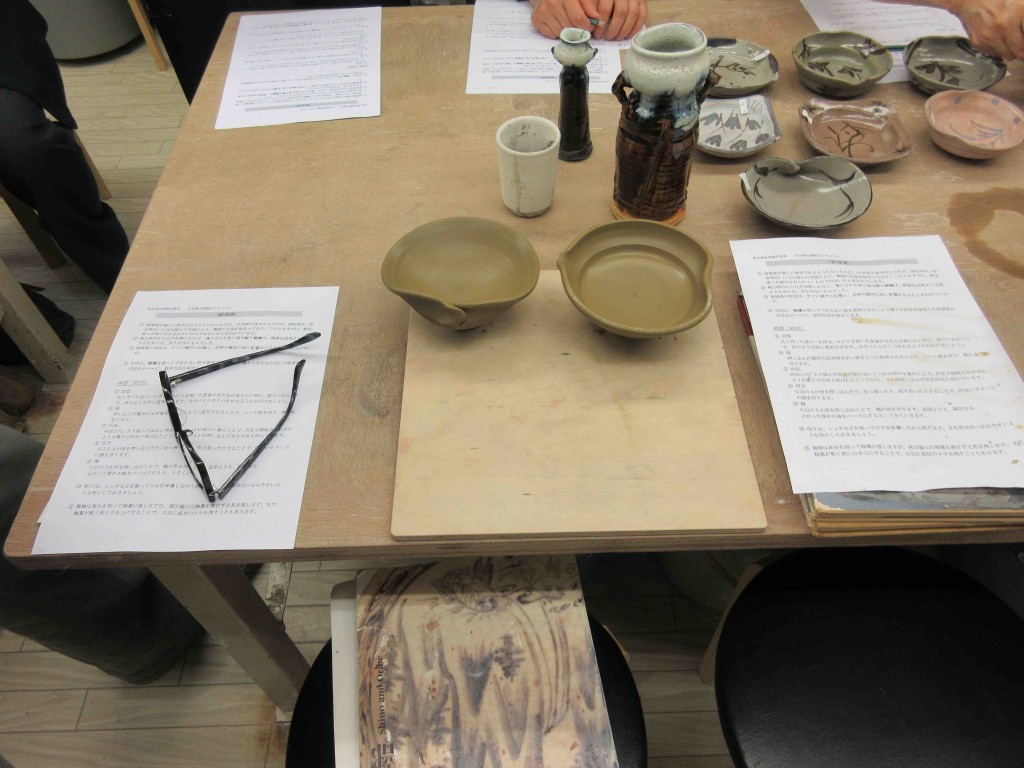
Karatsu style bowls made by Koyama-sensei
Our first class, Koyama demonstrated a number of Karatsu-style forms on the wheel. He effortlessly centered about 12 pounds of clay on a tabletop wheel while going over some of the history of Karatsu-ware and its use in tea ceremonies. Karatsu-ware comes from the Saga prefecture, on the southern island of Kyushu. Over 400 years old, this tradition also benefitted from the import (or rather, capture) of Korean potters during Hideyoshi’s reign. The work is simple, usually decorated with an iron-rich under-glaze and finished with a clear, or sometimes milky feldspathic glaze that can be glossy or a dry matte. Check out the photos of Koichi at the wheel, as well as some of the finished work. Now it was my turn…
My first task was to wedge clay. Surprisingly, I impressed the other students with my rapid cone-wedging technique. I actually learned this technique years ago from a Japanese friend, and seem to have mastered it enough to even get a nod from Koyama. On the wheel, though, my skills were a bit rusty – and using the “ox tongue” to shape bowls was new to me. Koichi kept me at it – repetition, repetition, repetition. Most Japanese potters spin the wheel clockwise, but since I am left-handed, I reversed the wheel. I was surprised to see I was not the only southpaw in the class, as one other gentleman had his wheel running CCW as well. The clay was also a little softer than I am used to, and relatively free of grog. After about an hour, I had two satisfactory bowls, and about 8 piled in the recycle bin next to my wheel. Humbling, but at least I had a few pieces to practice trimming the next day. My ultimate goal this week was to learn another traditional style of pottery called Onta-ware, also from Kyushu. Joyce sent me this link on Onta-ware if you are interested in the real thing: https://m.youtube.com/watch?v=KFOotlIz9xs
It was 21:30, and the class ends at 22:00, so I thought it would be time to clean up, but Koyama-sensei wanted to talk glazes. With the help of Emi, we discussed the glazes on the Karatsu-ware. Fairly simple: dominantly potassium feldspar (our Custer feldspar) with wood ash or rice-straw ash as a flux. The work is fired to 1250-1260 °C, or about cone 8-9 in our kilns. The Ryusen studio uses electric kilns (oxidation) as well as a kerosene kiln for reduction – natural gas is very expensive here.

Samples of Karatsu pottery from southern Japan, and glaze composition notes
Wednesday’s class, I got to see the Karatsu demo again, and trimmed my two bowls. Trimming began with me making my own kana, or trim tool, from a thin piece of steel. I bent the steel in a vise, and then honed and shaped the cutting edge with a flat file. Next, Koyama had me practice centering using the tapping method. He threw a roll of tape on the wheel, and said “center.” I am familiar with this technique, but have never really mastered it, so this was good practice. Well, it’s all good practice! After trimming, I covered the pieces with a cream-colored slip made from kaolinite and feldspar. The next day, I made a tobikana, or “jumping” trim tool to add the chatter marks to my bowls. Pictured are my two bowls and tobikana. Our last lesson was hand-building ocarinas – never a dull moment at Ryusen studio! Until next week, Mata Ne!

Onta style Tobikana (jumping tool) style pottery
Ja Mata …. till next time.

